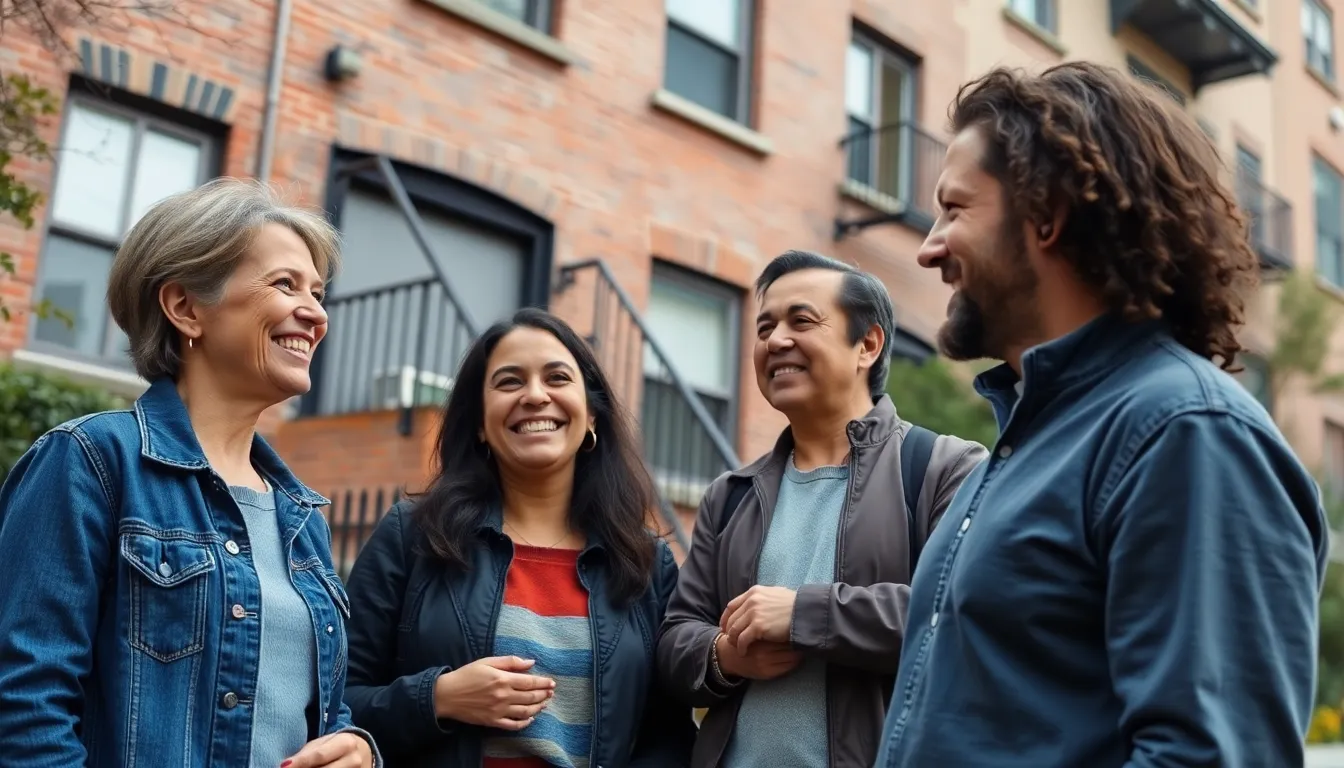Navigating the world of rent-controlled apartments can feel like trying to solve a Rubik’s Cube while blindfolded. With rising rents and housing shortages, understanding your rights in these unique living situations is more important than ever. After all, who wouldn’t want to keep their cozy abode without breaking the bank?
Table of Contents
ToggleOverview of Rent-Controlled Apartment Rights
Rent-controlled apartment rights provide essential protections for tenants in many areas. These rights typically limit rent increases, ensuring affordability in housing. Rent-controlled units often come with specific guidelines governing how landlords must handle leases and address repairs.
Tenants may enjoy protections against eviction without just cause. Many jurisdictions require landlords to provide valid reasons for eviction. Tenants may also have the right to renew their leases under predetermined conditions.
Understanding these rights can prevent potential conflicts between tenants and landlords. Awareness of local laws is crucial, as regulations vary by location. NYC, for example, offers strong rent-control protections compared to other cities.
Tenants may benefit from complaint processes for violations of their rights. Many areas provide avenues for resolving disputes, such as mediation or housing authorities. Participation in local tenant unions can enhance support and advocacy.
Research shows that keeping track of rent payment records and communications with landlords can support tenants in these situations. Documenting issues like maintenance requests helps protect their rights as well. Such proactive measures enable tenants to assert their rights effectively over time.
Lastly, resources like legal aid organizations exist to assist tenants navigating complex issues involving rent-controlled apartments. These organizations provide vital guidance on understanding and advocating for their rights. Active engagement with available resources helps empower tenants in securing their housing stability.
Importance of Rent-Controlled Apartment Rights
Rent-controlled apartment rights play a crucial role in maintaining housing affordability and stability for tenants. Recognizing these rights ensures that individuals can secure their living environments against unpredictable rent hikes and unjust evictions.
Economic Benefits for Tenants
Economic security stands as a primary advantage for tenants under rent control. Fixed rents allow tenants to budget effectively without worrying about sudden increases. Landlords must adhere to rules limiting how much rent can rise, often resulting in substantial savings for tenants over time. Savings might enable families to allocate funds toward education, healthcare, or other essential needs. Additionally, preserved affordability fosters community stability, ensuring diverse neighborhoods remain intact, strengthening social ties.
Stability in Housing Markets
Housing market stability flourishes in areas with rent-controlled apartments. Predictable rents contribute to neighborhood consistency, reducing tenant turnover and fostering community engagement. Properties with rent control often attract long-term residents, reinforcing local economies through consistent patronage of businesses. Furthermore, rent-controlled environments can mitigate the risks of gentrification, allowing existing residents to thrive while minimizing displacement. Stable housing markets encourage investment in local infrastructure, enhancing overall livability.
Legal Framework Governing Rent Control
Understanding the legal framework governing rent control provides clarity for tenants seeking stability in housing. Rent-controlled apartments fall under various state laws and local ordinances, which shape tenants’ rights and landlord responsibilities.
State Laws and Regulations
State laws provide the foundation for rent control. They dictate permissible rent increases while ensuring tenant protections against unfair eviction practices. States like California and New York enforce strict regulations, allowing rent stabilization measures that limit annual hikes. Certain statutes define the eligibility criteria for apartments under such regulations, empowering tenants with clear rights. Tenants should always familiarize themselves with their state’s specific rent control laws and any updates to ensure full protection.
Local Ordinances
Local ordinances play a critical role in shaping rent control rules. These regulations can vary widely across municipalities, addressing unique housing needs within communities. Some cities implement additional tenant protections, such as requiring just cause for evictions or capping rent increases beyond state limits. Cities like San Francisco exemplify this approach, enacting robust rules to protect tenants. Engaging with local tenant organizations can provide valuable insights into specific ordinances, helping tenants navigate the complexities of their situations effectively.
Tenant Rights Under Rent Control
Understanding tenant rights under rent control is crucial for maintaining affordable housing. These rights provide vital protections that help tenants navigate rental agreements and interactions with landlords.
Lease Agreements
Lease agreements in rent-controlled apartments typically outline specific terms, including rent amount, lease duration, and renewal conditions. Tenants often retain the right to renew their leases, ensuring housing stability. Clarity in lease terms protects against misunderstandings. Tenants possess the right to receive a written copy of their lease, which should include all relevant stipulations. Awareness of lease provisions enables tenants to assert their rights effectively.
Rent Increases and Limitations
Rent increases in rent-controlled apartments face strict limitations. Laws dictate how much landlords can raise rent annually, often capping increases at a specific percentage. Transparent regulations ensure tenants are informed about permissible rent changes. Evictions without just cause remain prohibited, providing further security for renters. Many cities establish local ordinances that may offer even stricter caps than state laws. Tenants benefit from understanding these limits, as they prevent sudden financial burdens and help maintain budget stability.
Challenges and Controversies
Rent-controlled apartments generate numerous challenges and controversies that impact tenants and landlords alike. Legal disputes frequently arise due to misunderstandings regarding tenant protections. Tenants may face eviction if landlords claim violations, leading to court battles over lease interpretations. Local law variations further complicate disputes, as tenants must understand their specific rights under state and municipal regulations.
Landlords experience financial strains given the limitations on rent increases. Many landlords argue that maintaining properties becomes difficult with capped rent, especially when faced with rising maintenance costs. Some view rent control as a disincentive for property investment, which could lead to reduced housing availability in the long term. Tenants, however, argue that stable rents allow them better budgeting and access to affordable housing. Balancing these concerns remains a significant task for lawmakers and communities.
Conclusion
Understanding rent-controlled apartment rights is essential for tenants navigating today’s housing landscape. These rights provide crucial protections that help maintain affordable living situations amidst rising costs. By knowing their rights and local regulations, tenants can better advocate for themselves and ensure their housing stability.
Engaging with tenant unions and utilizing legal resources can empower renters to address any violations effectively. As communities continue to grapple with housing shortages and economic pressures, the importance of these protections cannot be overstated. Ultimately, informed tenants contribute to a more stable and equitable housing market, fostering stronger communities for all.





